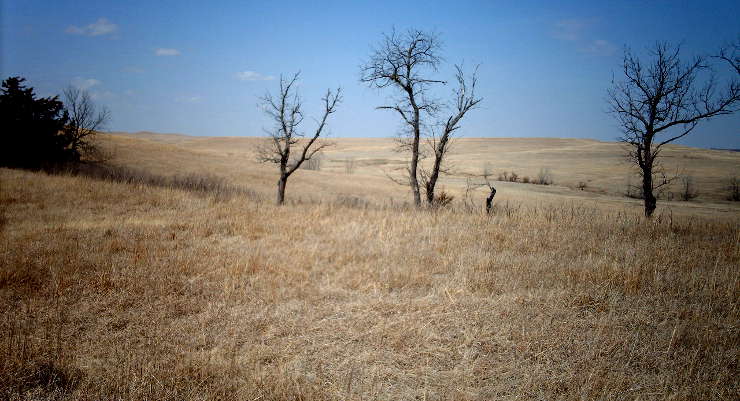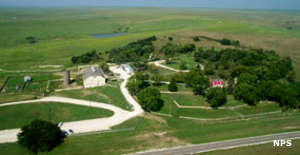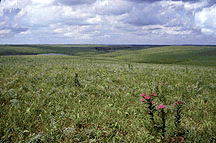Tallgrass Prairie National Preserve

A view on Tallgrass Prairie National Preserve

The Headquarters area
Tallgrass Prairie National Preserve is a 10,894-acre property north of Strong City in eastern Kansas. The National Park Service owns maybe 180 acres of that but the vast majority is owned by The Nature Conservancy. The Nature Conservancy bought the property in 2005 and the legislation that created the Preserve calls for the National Park Service and The Nature Conservancy to manage the property cooperatively. Previous to the 2005 purchase, the landowner at that time had donated 32 acres around the ranch headquarters to the National Park Service. That included the original 1881 ranch house, a one-room schoolhouse, other outbuildings and a limestone barn. That is now the headquarters and visitor center area of the National Preserve.
This is in the Flint Hills of eastern Kansas. 200-to-300 million years ago, this area was under a shallow inland sea. In that Permian Age, the gray and white limestone and the steel-tough chert (flint) that we see layered in the ground today was formed. Since then, the sea receded, the land raised up and wind and water erosion formed this now rocky and rolling landscape that is not suitable for plowing but does make good pasture. However, the first Euro-American settlers didn't know that and they essentially destroyed hundreds of thousands of acres of tallgrass prairie in the Flint Hills region and most of the flora and fauna that make up that vital ecosystem. This lone ranch that makes up Tallgrass Prairie National Preserve is the single largest remaining bit of that ancient sea of grass.

There are more than 500 species of plants on the Preserve. There are also almost 150 species of birds, 31 species of mammals and 39 species of reptiles and amphibians found on the property. The Preserve is managed in a way that mimics the ages-old pattern of this fire-dependent landscape: controlled burns happen every year in different parts of the property. Burn season is usually over by April 15 but during that season, areas may be closed with 24 hours notice.
The Nature Conservancy introduced a small bison herd to the 1,100-acre Windmill Pasture at Tallgrass Prairie National Preserve in October 2009. The 7 male and 6 female bison came from the Wind Cave bison herd in South Dakota. Two of the males died shortly after arriving in Kansas and were replaced with two more males from Wind Cave. The first calf was born in May 2010 and as of December 2013, there were 23 animals in the herd. Of all the bison herds now in America, this is one of the few public-owned herds that is genetically pure bison with no cattle genes in the pool. The plan is to grow the herd to 75 to 100 animals.
Hiking trails on Tallgrass Prairie National Preserve are open 24 hours a day, every day of the year but overnight camping and campfires are not allowed. During the Summer Season (May through October), the buildings are usually open daily from 8:30 am to 4:30 pm, except for Federal holidays. During Winter Season, the buildings are usually open daily from 9 am to 4:30 pm, except for Federal holidays. There are no entry fees involved.
Other photos and maps courtesy of the National Park Service

